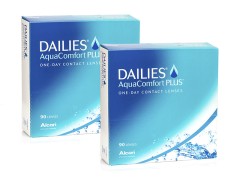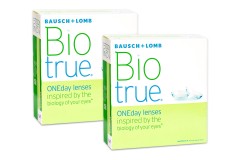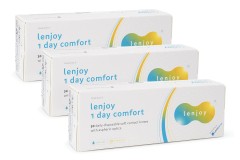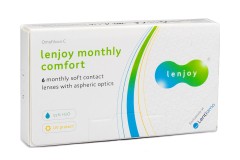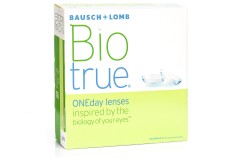How to wear makeup with glasses: Tips and tricks

Does your makeup smudge, flake, fade, or smear when you wear your glasses? From proper skincare prep to various formulas and accessibility tools, Lentiamo's editors and optometrists have you covered,
Optometrist Barbora Keřková also shares whether wearing makeup to the opticians is advisable and provides advice for glasses wearers.
Follow along for all of our tips and tricks!
Can you still wear makeup and glasses?
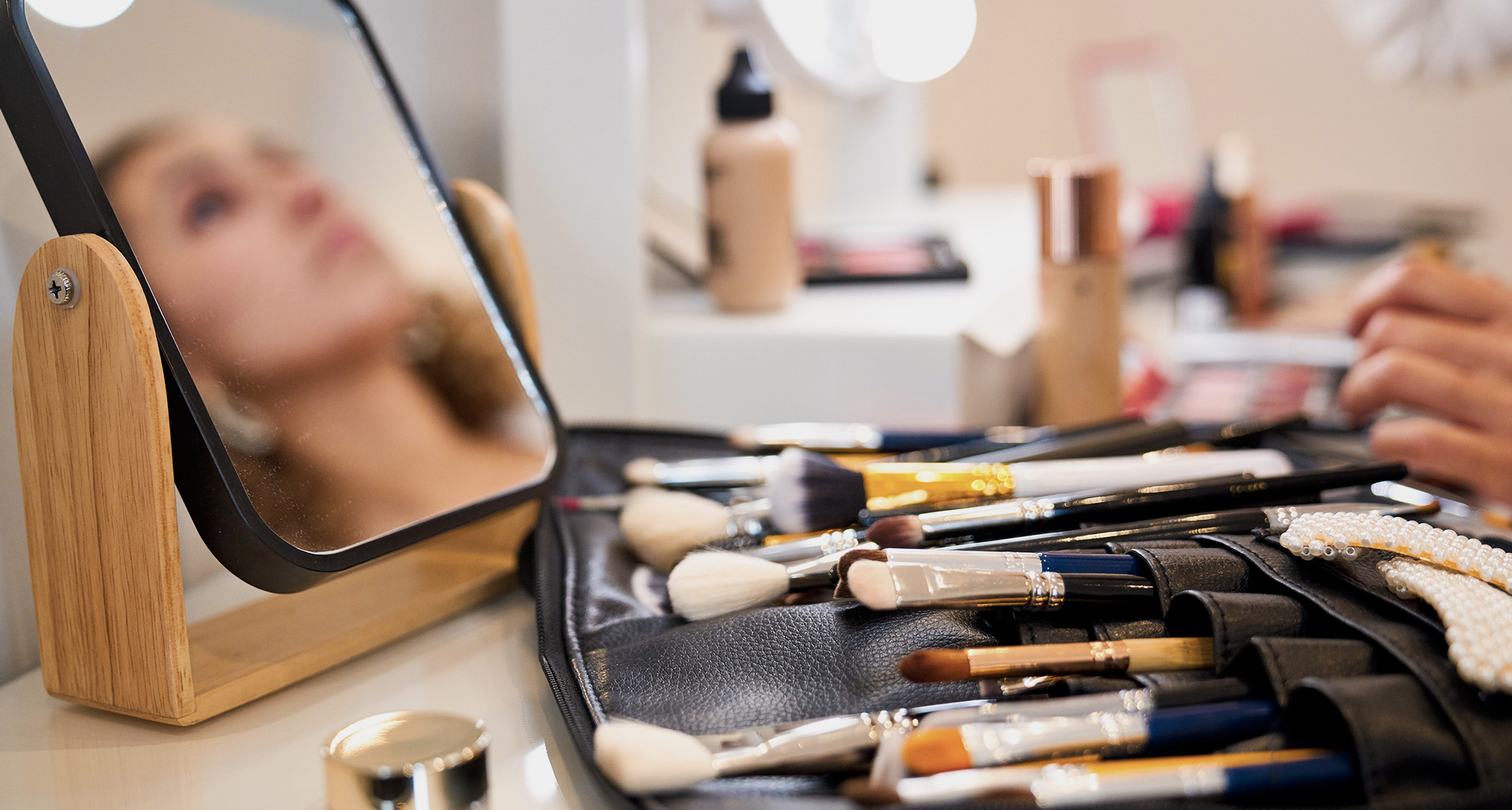
Yes, makeup and glasses can be worn together and complement each other when done right. Learn more about how to do makeup as a glasses wearer below.
How to do makeup with glasses
You can make simple changes to your routine to preserve your makeup, complement your frames, or make your product pop.
Before you start: Remember to wash your hands before applying makeup. Not only does this prevent grease from transferring from your hands to your face, it's especially crucial to promote good hygiene and eye health.
Skincare prep
Begin with a solid skincare routine to create a smooth canvas for your products.
If you have particularly oily skin, oil-free lotions and mattifying moisturisers are designed to control oil and shine. These can help prevent glasses from sliding off a slick surface, keeping smudging and fading to a minimum.
Lashes and mascara
Some may find that mascara smudges their lenses, clumping the eyelashes together and disrupting their vision. A simple yet often overlooked step is to let your mascara dry fully before putting your glasses back on.
Here are a few other tips:
- Short or straight lashes? Use an eyelash curler which can help direct lashes upward and away from your lenses.
- Flaking mascara stuck to your lenses? Replace older and dried out mascaras with a new tube that has a moisturising formula.
- Mascara irritates your eyes? High-quality lash extensions from reputable establishments can provide length without the need for mascaras or disposable false eyelashes that use glue.
Remember that once your glasses are in place, your eyelashes should not touch the lenses of your glasses. This can lead to eye infections or irritation such as blepharitis, an inflammation along the edges of the eyelids.
Optometrist insights
"Direct contact between eyelashes and eyeglass lenses can lead to contamination of the lenses and, simultaneously, discomfort while wearing glasses. The natural oils, debris, or makeup residue present on eyelashes can transfer onto the lenses upon contact, causing smudges and reducing optical clarity.
"Additionally, the constant friction between the eyelashes and the lenses might create an uncomfortable experience for the wearer."
Barbora Keřková
Eye shadow
Different eyeshadow colours and types can enhance or soften your look, depending on your preferences.
- Want depth and dimension? A dark "smokey eye" on light, medium, and deeper complexions will draw attention toward your eyes.
- Going full glam? Vibrant and contrasting colours are perfect to ensure makeup stands out behind any type of frame.
- Prefer neutral palettes? Opt for shimmering or glitter shadows that will catch the light and reflect behind lenses.
Don't be afraid to go brighter and bolder than you normally would. Let your glasses act as a frame for the look you've created.
Eye liner
Eye liner is a great product to draw attention to your eyes. As a general rule of thumb: the thicker your frames, the thicker your eyeliner should be. Thin liner tends to get lost or overlooked when chunkier frame styles command all of the attention.
Try a strong winged eyeliner with cat-eye frames. Or use colourful liners to complement or add interest to your specs!
Pro tip: For those with monolids or heavily hooded eyes, experiment with exaggerated, precise and thin, or even bolder liners.
Play with your eyeliner shape to see what looks best. This can help the liner remain visible both on the eyelid and behind glasses. It can also help your eyes retain their shape and not be overpowered by makeup.
Remember that It's okay to do eye makeup before doing your foundation. This approach minimises the risk of smudging or disturbing your "base" as you work on your overall look. It also gives your foundation time to dry without any interruptions.
Foundation
First and foremost, choose foundation formulas that suit your skin type and comfort. Matte and powder foundations are excellent for oily skin but also work well with glasses.
Here are two popular application approaches to prevent foundation from rubbing off the bridge of your nose.
- Apply less foundation to the bridge of your nose where your glasses rest. This decreases the chance of it rubbing off in the first place. It also minimises the contrast between the surrounding skin and affected areas where glasses rub foundation off.
- Add extra product to the bridge of the nose where your glasses touch. Use pore control primers to smooth the skin's surface, apply foundation, and then set it using powder or a setting spray, concentrating on the bridge of your nose where sweat accumulates.
Lipstick
For glasses wearers, any lipstick shade or formula is great depending on your preference.
We love bold, bright, or deep shades with oversized frames. Neutral lip colours like browns and beiges pair well with wire frames for a simple, elegant look.
Eyebrows
Both your glasses and eyebrows should frame your eyes. When glasses fit properly, the top of the frames should sit right below your brows.
Add volume to your brows so they don't get lost behind the top rim of your specs.
Blush and highlighter
Blushes and shimmery highlighters ensure your features pop behind reflective glasses.
Highlighter is a product that reflects light, typically used on raised points of your face to "highlight" or brighten these features. Where can it be applied?
- Cheekbones
- Temples
- Nose bridge
- Under the brows
- Inner corners of eyes
- Cupid's bow
Setting sprays
Setting sprays are designed to help makeup stay in place and prevent makeup transfer. It can be especially useful on the bridge of your nose where glasses sit. Some formulas are even designed to keep oily skin at bay.
If you decide to try setting a setting spray, add a little extra to the spot where your glasses meet your nose.
Should you wear makeup to the opticians?
Lentiamo optometrist Barbora Keřková advises against wearing makeup to an eye examination. It may get in your eyes or smudge when using medical devices or when trying on trial frames. This is particularly crucial for patients scheduled for contact lens fittings, as eye makeup can interfere with the fitting process and accurate assessment.
Patients are encouraged to arrive with clean, makeup-free eyes. This ensures the effectiveness, comfort, safety, and overall success of any eye procedure.
Pro tip: If you find it challenging to select frames without makeup, Barbora suggests you should feel free to bring along your makeup tools to your appointment. After the eye examination, you can apply your products to see how your glasses look with your everyday makeup.
Choosing the right glasses for makeup wearers

There are endless glasses and makeup style combinations. Here are some looks our experts like:
Minimalist frames
Thin metal, wire-rimmed, clear, or rimless designs often complement various makeup styles. Your makeup look becomes the focal point of your face.
Maximalist frames
Thick or brightly coloured frames are more versatile than you might think. Combine them with striking shadows and lipstick, you've got a high-impact look. You can also opt for more neutral shades and glitters to put the focus back on your specs.
You can find trending glasses styles that won't slip, slide, or pinch to ensure your makeup has minimal contact with your frames.
Applying makeup with low vision or visual impairments
While visual impairments are diverse and depend on each individual, the right tools and techniques can make the process of doing makeup more accessible and enjoyable.
Here are some tips to try:
Magnifying and handheld mirrors
Incorporating magnifying or small handheld mirrors into your routine can be useful. These mirrors help enlarge specific areas, allowing for up-close precision during makeup application. They are also valuable for individuals dealing with presbyopia, a common age-related vision issue.
Adequate lighting
Make sure your makeup area is well-illuminated with spot lighting or bright natural light. This helps enhance visibility for easier application.
Accessible brands
Consider exploring different beauty brands. In an issue of Enable, a U.K. publication with specialist content for people within the disability community, there is a helpful article on popular accessible beauty brands (page 33). The feature covers topics like braille packaging and labels, audio guides with product information, and consultation services.
Tools
Short makeup brush handles can allow you to work more closely with mirrors, ensuring precise application. Utilising tape as a guide for eyeliner can help maintain a straight line, and makeup sponges are excellent for seamlessly blending cream and liquid products without leaving streaks.
Practice
As with any skill, finding products and processes that work for you is important. Using sense of touch and getting used to the look and feel of your products is a great first step in tackling your technique.
Try lighter coverage foundations, CC and BB creams, or tinted moisturisers if you're just starting out with makeup. Higher coverage products tend to be harder to blend.
Ask others
If you want to or prefer to collaborate, consider checking with a sighted person in your life. They can provide quick insights into formulas and colours that might suit your preferences.
And of course, Youtube or social media platforms are also an abundant resources for guidance and tips for specific looks you're interested in. Many provide detailed tutorials for full face makeup, eye makeup, and beyond.
Bonus tips for wearing makeup with glasses
Try contact lenses
If you struggle to keep your makeup look fresh with glasses, don't rule out contact lenses. Daily contacts are a convenient option for infrequent lens wearers. They work well for special occasions since a pair is simply worn and then thrown away at the end of the day.
Your eye care specialist can help you determine if contacts are another option for you.
Pro tip: Be sure to put your contacts in before applying makeup. That way you'll avoid transferring makeup onto the lens and into your eye – ouch!
Anti-reflective coatings
To make your makeup look shine, opt for anti-reflective glasses coatings. These optical coatings reduce reflections and make it easier to see your eyes behind your lenses.
Adjust your glasses
More than how they look, it's important to find glasses that fit your face properly. Did you know your glasses shouldn't rub your temples or cheeks? Not only does this contribute to fading makeup, it can cause irritation.
Adjust your glasses to ensure comfort and makeup conservation.
Frequently asked questions
Should you wear mascara if you wear glasses?
Yes, you can absolutely wear mascara and glasses at the same time. Let your mascara dry completely before putting on your frames so the residue doesn't transfer to the lenses. If you have particularly long lashes, curl them so they point upward and don't stick out into the lenses.
What makeup looks best with glasses?
Most makeup styles look great with glasses. Shimmering eyeshadows that catch the light to help your eyes pop behind your lenses. Bold colours can have the same effect. The best colours and styles will achieve your desired look. Whether it's a striking eyeliner shape or contrasting shades, makeup that shines behind your frames is ideal.
Closing thoughts from Lentiamo
In summary, wearing makeup with glasses is a winning combination if you follow some essential guidelines. From skincare prep to makeup choices and selecting glasses that fit well, you can make your makeup last and look great.
With the right techniques, makeup is a stylish way to showcase your unique style and confidently wear your glasses.



